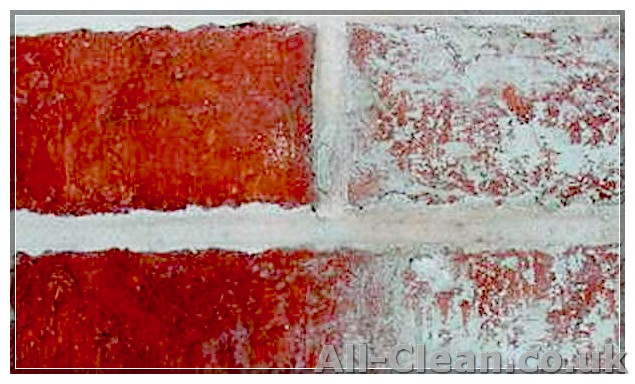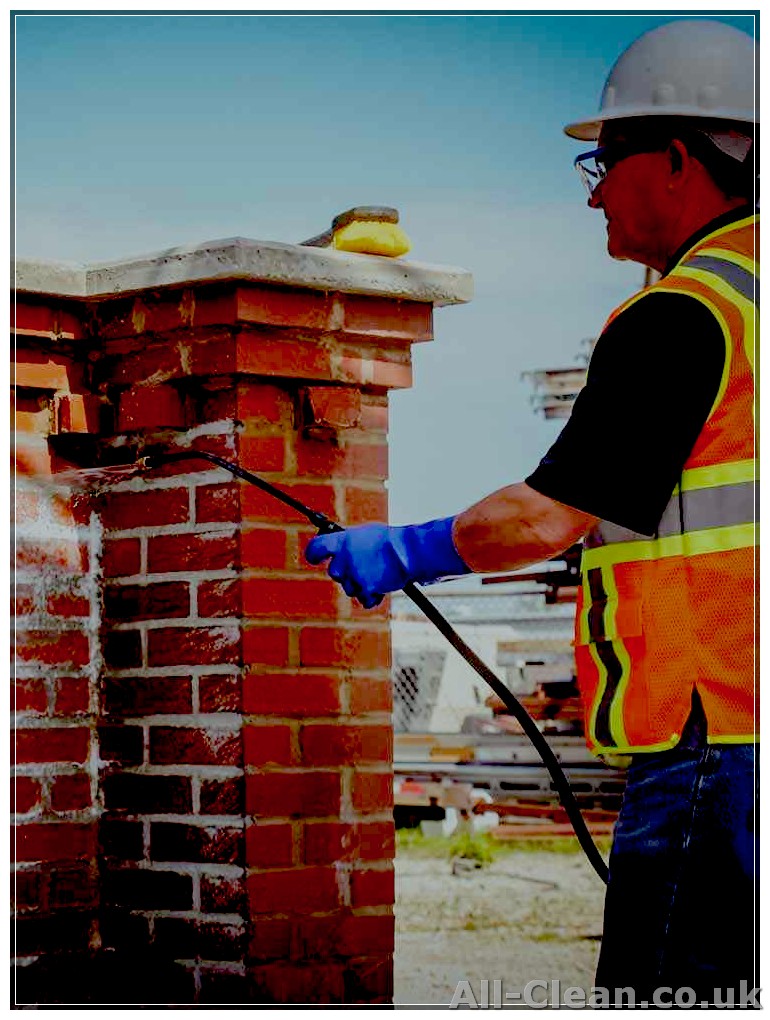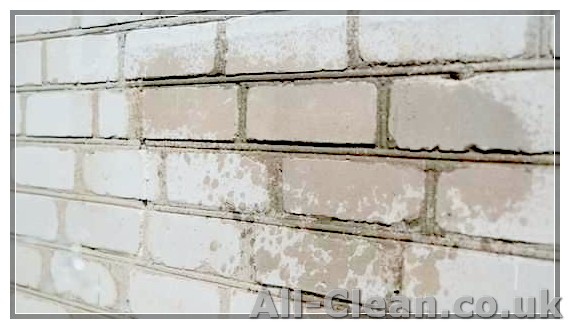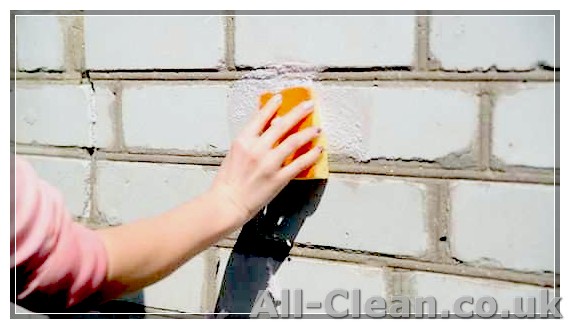
Bricks are a popular choice for building projects due to their durability and aesthetic appeal. However, over time, bricks can accumulate dirt, grime, and stains, detracting from their original beauty. If you’re wondering how to clean bricks and restore them to their former glory, we’ve got you covered with this comprehensive guide.
When it comes to cleaning brick surfaces, it’s important to take into consideration the type of stain or dirt you’re dealing with. Different stains may require different cleaning methods, so it’s important to identify the problem areas before you start cleaning. Always remember to wear protective gear, such as gloves and goggles, to keep your eyes and skin safe.
One of the easiest and most effective ways to clean bricks is by using a mixture of water and detergent. This method works well for general dirt and grime that may have accumulated on the surface of the bricks. Simply mix a small amount of detergent, such as dish soap or laundry detergent, with water in a bucket and use a bristled brush to scrub the surface of the bricks. Rinse the bricks with clean water after scrubbing to remove any leftover soap residue.
If your bricks have stubborn stains or marks that won’t come off with a water and detergent solution, you may need to consider using a specialized cleaning agent. There are many commercially available brick cleaners on the market that can help remove tough stains and discoloration. Be sure to follow the instructions provided by the manufacturer and test the cleaner on a small, inconspicuous area of the bricks before applying it to the entire surface. This will ensure that the cleaner is safe to use and won’t cause any damage.
In some cases, bricks may also require additional treatments to prevent future staining or to enhance their appearance. For example, you might consider using a brick sealer or tinting agent to protect the bricks from moisture and UV damage. Again, it’s important to read and follow the instructions provided by the manufacturer to ensure proper application.
After cleaning and treating your bricks, it’s important to take steps to prevent dirt and stains from building up again. Regular maintenance is key in keeping your bricks looking clean and well-maintained. Consider using a wire brush or a pressure washer to remove any loose or powdery material from the surface of the bricks. Avoid using excessive force or abrasive materials, as this could damage the bricks.
As you can see, cleaning bricks is a simple process that can be done with a few basic supplies and some elbow grease. Whether you’re tackling an outdoor brick wall or simply cleaning a few bricks for decorative purposes, following these step-by-step instructions will help you achieve the desired results. So roll up your sleeves and give your bricks the love they deserve!
- Why It’s Important to Clean Bricks
- The Benefits of Cleaning Bricks
- Tips for Cleaning Bricks
- Preserve the aesthetics and structural integrity
- 1. Clean regularly
- 2. Choose the appropriate cleaner
- 3. Protect your bricks
- 4. Be cautious with staining materials
- 5. Remove powdery stains with salt
- 6. Address stubborn stains
- 7. Take safety precautions
- Step-by-Step Instructions on Cleaning Bricks
- Step 1: Assess the condition of your bricks
- Step 2: Gather the necessary materials
- Step 3: Test the brick cleaner
- Step 4: Apply the brick cleaner
- Step 5: Rinse off the brick cleaner
- Step 6: Deep clean with vinegar (optional)
- Step 7: Prevent future staining
- Gather the necessary tools and materials
- Tips for Removing Dirt and Grime from Brickwork
- 1. Wear Protective Gear
- 2. Assess the Cleaning Needs
- 3. Choose the Right Cleaning Solution
- 4. Apply the Cleaning Solution
- 5. Scrubbing and Cleaning
- 6. Rinse and Repeat
- 7. Take Care of After-Cleaning
- 8. Look out for Tinting
- 9. Deal with Stubborn Stains
Why It’s Important to Clean Bricks

Cleaning bricks is an essential maintenance task that not only improves the appearance of your property but also helps to protect the longevity of the bricks themselves. Dirty bricks can make your home or building look run-down and neglected. By keeping them clean, you will enhance the overall curb appeal of your property, making it more visually appealing and potentially increasing its value.
The Benefits of Cleaning Bricks
There are several reasons why it’s important to clean bricks regularly. Here are some benefits you can enjoy by maintaining clean bricks:
- Prevent Staining: Dirty bricks can easily become stained and discolored over time. By cleaning them regularly, you can prevent the buildup of dirt, grime, and other substances that may lead to permanent staining.
- Protect Against Damage: Accumulated dirt and moisture can cause damage to bricks over time. By cleaning them, you can remove any potential sources of damage and prevent costly repairs in the future.
- Improve Longevity: Bricks that are regularly cleaned and maintained tend to last longer than those that are neglected. Cleaning can help remove any corrosive elements that could degrade the bricks’ structural integrity.
- Enhance Visual Appeal: Clean bricks can greatly improve the overall appearance of your property. Whether it’s your home or a commercial building, maintaining clean bricks will give it a fresh and well-maintained look.
Tips for Cleaning Bricks
When it comes to cleaning bricks, there are several methods you can use, depending on the level of dirt and the type of bricks you have. Here are some tips to help you clean your bricks effectively:
- Using Water and a Brush: For lightly soiled bricks, a mixture of water and a mild detergent can work wonders. Simply apply the soapy water to the bricks with a brush and scrub away the dirt. Rinse thoroughly to remove any residue.
- Pressure Washing: For heavier dirt and grime, a pressure washer can provide a more efficient clean. Be sure to use a low-pressure setting and hold the nozzle at a safe distance from the bricks to avoid causing any damage.
- Chemical Cleaners: There are various brick cleaning agents available that can help remove stubborn stains. Always follow the product’s instructions and test it on a small, inconspicuous area before applying it to the entire surface.
- Consulting a Professional: If your bricks are severely stained or damaged, it’s best to consult a professional bricklayer or cleaning service. They will have the expertise and equipment to tackle even the toughest cleaning challenges.
Remember, each cleaning method has its pros and cons. Depending on your specific situation and the condition of your bricks, one method may work better than another. It’s also important to note that some types of bricks may require special cleaning techniques or materials, so it’s always a good idea to consult with an expert before undertaking any cleaning project.
Preserve the aesthetics and structural integrity
Maintaining the clean and pristine appearance of your brickwork is not only important for preserving its aesthetics but also for ensuring its structural integrity. Bricks are formed by the combination of clay and other materials, and over time, they can become susceptible to damage caused by weathering and pollutants in the environment. Therefore, it is vital to take appropriate steps to protect and clean your bricks.
1. Clean regularly
One of the most important tips for preserving the aesthetics and structural integrity of your brickwork is to clean it regularly. Over time, dirt, grime, and other stains can accumulate on the walls, making them look dull and unappealing. Regular cleaning can help prevent the formation of stubborn stains and prolong the life of your bricks.
2. Choose the appropriate cleaner

When it comes to cleaning bricks, there are many types of cleaners available on the market. The choice of cleaner will depend on the type of stains you need to remove and the color of your bricks. Some commonly used cleaners include vinegar, detergent solutions, and specialized brick cleaners. Always choose a cleaner that is safe for your bricks and follow the manufacturer’s instructions.
3. Protect your bricks
To protect your bricks from stains and weathering, you can consider applying a protective coating. This can help repel water, prevent the growth of mold and mildew, and keep your bricks looking new for longer. There are many types of protective coatings available, so choose one that is suitable for your specific needs.
4. Be cautious with staining materials
If you plan to stain your bricks to improve their appearance or match them with other materials, it is crucial to use the right products. Staining bricks requires careful consideration of the type of stain, the desired color, and the compatibility with the existing materials. Always test a small area before applying it to the entire surface.
5. Remove powdery stains with salt
If you notice powdery white stains on your brickwork, it could be a sign of efflorescence. Efflorescence occurs when salts in the bricks are brought to the surface by moisture and then crystallize. To remove these stains, mix equal parts of water and vinegar in a bucket and apply the solution to the affected areas. Scrub gently with a brush and rinse with clean water.
6. Address stubborn stains

If regular cleaning methods do not work on stubborn stains, you may need to use more specialized techniques. Baking soda paste is commonly recommended for removing tough stains from bricks. Make a paste using baking soda and water, apply it to the stains, and let it sit for a few minutes. Scrub the stains with a brush and rinse with water.
7. Take safety precautions
When cleaning bricks, it is important to take safety precautions to protect yourself and avoid any potential harm. Wear protective gloves, goggles, and a mask to shield your skin, eyes, and respiratory system from the cleaning solutions and dust. Work in a well-ventilated area and follow the instructions on the cleaning products carefully.
By following these steps, you can preserve the aesthetics and structural integrity of your bricks, ensuring they remain a durable and visually pleasing part of your home.
Step-by-Step Instructions on Cleaning Bricks
If you have brick walls, it’s important to keep them clean and well-maintained. Cleaning bricks is not a difficult task, but it requires some time and effort. In this step-by-step guide, we will explain the process of cleaning bricks, including different types of bricks and the necessary materials you will need.
Step 1: Assess the condition of your bricks
Before you start cleaning, it’s essential to determine the type of bricks you have. Different types of bricks may require different cleaning methods. Also, check if your bricks have any damage like cracks or loose joints. If there are any issues, address them first before proceeding with the cleaning process.
Step 2: Gather the necessary materials
For cleaning bricks, you will need the following materials:
- A bucket of warm water
- A stiff brush
- A reliable brick cleaner
- Goggles and gloves for protection
Step 3: Test the brick cleaner
Before applying the brick cleaner to the entire surface, it’s crucial to test it on a small, inconspicuous area. This test will help you ensure that the cleaner does not damage or discolor the bricks.
Step 4: Apply the brick cleaner
Once you’ve selected a suitable brick cleaner, apply it to the surface of the bricks. Work in small sections and scrub the cleaner onto the bricks using a stiff brush. Make sure to cover all areas and pay extra attention to stained or dirty spots.
Step 5: Rinse off the brick cleaner
After scrubbing the brick cleaner onto the bricks, rinse it off with a hose or clean water. Repeat this step until the water runs clear, ensuring there is no brick cleaner residue left on the surface.
Step 6: Deep clean with vinegar (optional)
If your bricks have stubborn stains or discoloration, you can consider using a mixture of vinegar and water. Mix equal parts of vinegar and water in a bucket and scrub the solution onto the problematic areas. Rinse off the vinegar mixture thoroughly afterward.
Step 7: Prevent future staining
To prevent dirt, dust, or paint stains from affecting your brickwork again, consider applying a good quality brick sealer or water repellent to the surfaces. These products create a barrier that helps repel moisture and prevent staining on the bricks.
By following these step-by-step instructions, you can easily clean your bricks, improve their appearance, and keep them in good condition for years to come.
Gather the necessary tools and materials
Before you start cleaning your bricks, it’s important to gather all the necessary tools and materials. This will ensure that you have everything you need to effectively clean your bricks and prevent any damage to the surface. Here are the tools and materials you will need:
- Protective goggles
- Bristled brush or scrub brush
- Bucket
- Water
- Mild detergent
- Vinegar
- Baking soda
- Power washer (optional)
Depending on the specific type of dirt or stains on your bricks, you may need additional tools or cleaners. For example, if you have paint or graffiti on your bricks, you will need a paint stripper or graffiti remover. If you have moss or algae growth, you may need a moss and algae cleaner. Always choose the appropriate cleaning agent for the type of bricks you have, as different types of bricks may require different cleaning methods or products.
It’s worth noting that some bricks, such as painted or lime mortar bricks, are more vulnerable to damage and may require special care. If you’re unsure about the type of bricks you have or the best cleaning method to use, it’s always a good idea to consult a professional.
Now that you have gathered all the necessary tools and materials, you are ready to start cleaning your bricks. In the next section, we will provide step-by-step instructions on how to clean your bricks effectively and safely.
Tips for Removing Dirt and Grime from Brickwork
When it comes to cleaning outdoor brickwork, ongoing maintenance is key to keeping it looking its best. Here are some tips for effectively cleaning and removing dirt and grime from your brickwork:
1. Wear Protective Gear
Before you start the cleaning process, put on goggles and gloves to protect your eyes and hands.
2. Assess the Cleaning Needs
Different types of dirt or grime may require different cleaning methods. Assess the condition of your brickwork and identify the most suitable cleaning approach.
3. Choose the Right Cleaning Solution
For most brick cleaning work, a mixture of water and mild detergent will suffice. However, for deeper cleaning, you may need to consider using lime, common vinegar, or a mix of salt, white vinegar, and water. It’s important to choose a cleaning solution that won’t damage the bricks or change their color.
4. Apply the Cleaning Solution
Using a spray bottle, apply the cleaning solution to the areas with dirt or grime. Pay attention to the mortar joints as well.
5. Scrubbing and Cleaning
Use a soft-bristled brush or sponge to gently scrub the brick surfaces and mortar joints. Be sure to scrub in a circular motion to prevent damage to the bricks. For stubborn stains, you may need to apply more pressure or use a specialized brick cleaner.
6. Rinse and Repeat

After scrubbing, rinse the brickwork thoroughly with clean water. If necessary, repeat the cleaning process to improve the results.
7. Take Care of After-Cleaning
To prevent the formation of new dirt and grime, consider applying a brickwork sealer or paint. This will also help improve the overall appearance of your brickwork.
8. Look out for Tinting
Be cautious when using cleaning solutions near vegetation or other surroundings, as some solutions may cause tinting or damage.
9. Deal with Stubborn Stains
If you’re facing deep stains that are difficult to remove, consider using an appropriate acid-based cleaner or seeking professional help.
By following these tips, you can effectively remove dirt and grime from your brickwork and make it look fresh and clean once again.








